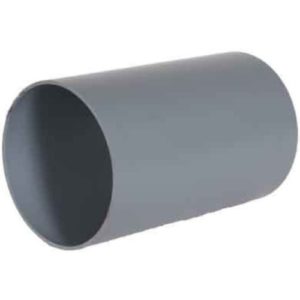Two of the reasons PVC and CPVC are so popular are their low cost and light weight. They are less expensive than any metal piping and install easily. They are also lightweight, which means they need less support than some of the heavier metal pipes. These materials also have fantastic chemical resistances, so what's not to love? PVC/CPVC duct piping has thinner walls, which makes it even lighter and ideal for low pressure gas transport. If you're wondering when to use PVC duct materials, keep reading!
What is PVC Ducting?
PVC and CPVC pipe and fittings are split into several sizing categories, the most popular being schedule 40 and schedule 80. Sch. 40 PVC is standard thickness, while sch. 80 is significantly thicker. This makes schedule 80 PVC better for higher pressure applications. Duct PVC is even thinner than schedule 40, with walls not designed to with stand high pressures or heavy liquids. The most common applications for PVC duct involve venting gas and exhaust.
PVC and CPVC ducting have the same properties as PVC and CPVC, respectively, when it comes to chemical and temperature resistance. PVC and CPVC duct resist many chemicals that would make iron alloys rust. When it comes to temperature, PVC and CPVC differ. PVC is rated for temperatures up to only 140F (60C) while CPVC is rated for temperatures up to 200F (93C). The thing that sets duct piping apart from regular PVC/CPVC piping is the wall thickness. It is a thinner, less expensive material. But what are some common applications for PVC/CPVC duct? Let's find out!
When to Use PVC Duct

As we briefly mentioned before, the most popular use of PVC/CPVC duct is in exhaust systems. It is an inexpensive and lightweight material that is perfect for transporting unwanted gases or fumes away from where they are not wanted. Using PVC duct piping for this type of application is a perfect use of its high chemical tolerance. The PVC or CPVC material will withstand acidic or otherwise corrosive gases for much longer than even some metals.
Another application that people sometimes use duct PVC for is HVAC. Most of the time, galvanized steel is used for duct work, but for short distances, CPVC duct can do the job. Make sure not to use regular PVC duct, as temperatures over 140F can cause it to break down and leak over time. The problem with using CPVC duct for an entire HVAC system is that it small diameter pipe will make air coming out of a vent feel more like a blow-dryer. It also weighs more than the galvanized steel typically used for heating and air lines. However, CPVC duct will do in a pinch!

Another less conventional use for PVC duct is DIY structure construction. Due to its low cost, you can save a lot of money by making a project like a clothing rack or dog jump out of PVC duct piping. The thin walls also make this piping easier to cut and even bend, if you know how to do that. Just like with standard PVC pipe, PVC duct has endless possibilities, so give it a try today! Check out our huge selection of PVC and CPVC duct parts below.

